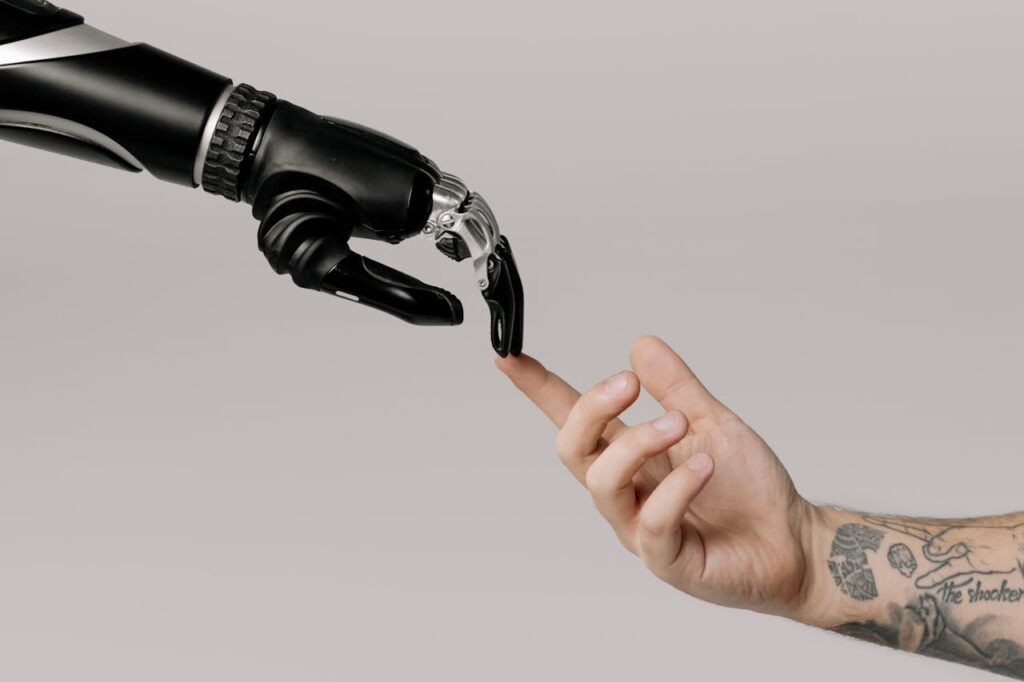In today’s fast-paced digital economy, efficiency is everything. Manual tasks and siloed workflows slow down progress, waste resources, and drain productivity. Enter AI workflow automation — the intelligent solution powering the next era of business transformation.
From startups to global enterprises, organizations are turning to AI workflow automation to enhance accuracy, accelerate output, and empower teams to focus on what truly matters — strategy, creativity, and growth.
In this deep-dive guide, we explore everything you need to know about AI workflow automation: what it is, how it works, why it matters, use cases across industries, tools, implementation strategies, and its game-changing potential for the future.
Table of Contents
- What Is AI Workflow Automation?
- How AI Enhances Traditional Workflow Automation
- Benefits of AI Workflow Automation
- Real-World Use Cases by Industry
- AI Technologies Powering Workflow Automation
- AI Workflow Automation vs Traditional Automation
- Top AI Workflow Automation Tools and Platforms (2025)
- Key Components of an AI Workflow Automation System
- How to Implement AI Workflow Automation in Your Business
- Common Challenges and How to Overcome Them
- Future Trends in AI Workflow Automation
- AI Workflow Automation and the Future of Work
- Conclusion
- FAQs
What Is AI Workflow Automation?
AI workflow automation is the use of artificial intelligence technologies to create, optimize, and manage business workflows without continuous human intervention.
In traditional workflow automation, rules and triggers are hard-coded to handle repetitive tasks. But with AI, workflows can now:
- Understand unstructured data (emails, voice, documents)
- Learn from user behavior
- Make decisions dynamically
- Continuously optimize performance
Example:
In HR, an AI-powered workflow might automatically analyze resumes using NLP, rank applicants using predictive models, schedule interviews via integrated calendars, and notify candidates using an AI chatbot — all without human input.
How AI Enhances Traditional Workflow Automation

AI adds intelligence and adaptability to otherwise rigid automation systems. Let’s look at the key improvements:
| Area | Traditional Workflow Automation | AI Workflow Automation |
|---|---|---|
| Data Type | Structured data only | Structured + unstructured data |
| Learning | No learning (static) | Self-learning (adaptive) |
| Decision Making | Rule-based | Predictive, probabilistic |
| Optimization | Manual tuning | Continuous AI-driven optimization |
| Exception Handling | Limited | Real-time intelligent handling |
Benefits of AI Workflow Automation
1. Increased Productivity
AI reduces the time spent on repetitive tasks, allowing teams to focus on strategic work.
2. Reduced Human Error
AI systems follow precise logic and don’t make mistakes due to fatigue or distraction.
3. Faster Decision-Making
Real-time analytics and AI insights speed up workflows and approvals.
4. Scalability
AI workflows adapt to higher workloads without requiring new hires or infrastructure.
5. Enhanced Customer Experience
AI enables 24/7 responses, hyper-personalized communication, and faster resolutions.
6. Improved Compliance
Automated audits and policy enforcement reduce legal and regulatory risks.
Real-World Use Cases by Industry
1. Healthcare
- AI reads patient charts and suggests diagnoses.
- Automates appointment scheduling, billing, and insurance verification.
- Monitors patient vitals using AI-powered IoT workflows.
2. Finance
- Automates KYC/AML compliance with document recognition.
- AI flags suspicious transactions in real time.
- Streamlines mortgage approval workflows with AI-driven scoring.
3. Retail & eCommerce
- AI-driven inventory and supply chain management.
- Personalized marketing workflows using behavioral data.
- Automated customer support using chatbots and NLP.
4. Human Resources
- End-to-end hiring automation: from resume parsing to onboarding.
- Employee engagement workflows powered by sentiment analysis.
- Exit workflows and predictive churn modeling.
5. IT & SaaS
- AI handles L1 support tickets via virtual agents.
- Auto-scaling cloud infrastructure based on predictive analytics.
- Cybersecurity incident response automation using AI decision engines.
AI Technologies Powering Workflow Automation
1. Machine Learning (ML)
Learns patterns from historical data to make predictions, rank options, and adapt workflows.
2. Natural Language Processing (NLP)
Reads, interprets, and generates human language — emails, chat, voice, or documents.
3. Computer Vision
Allows automation of workflows involving images or video (e.g., ID verification, quality control).
4. Generative AI
Creates content (emails, messages, reports) dynamically based on workflow needs.
5. Predictive Analytics
Forecasts future outcomes (e.g., lead scoring, demand forecasting) to guide workflow logic.
AI Workflow Automation vs Traditional Automation
| Feature | Traditional Automation | AI Workflow Automation |
|---|---|---|
| Setup | Manual, rule-based | Intelligent, data-driven |
| Adaptability | Low | High |
| Personalization | Generic workflows | Individualized workflows |
| Input Data | Structured only | Handles structured + unstructured |
| Maintenance | Frequent manual updates | Self-improving with time |
| Use Case Scope | Narrow (repetitive tasks only) | Broad (cognitive & complex tasks) |
Top AI Workflow Automation Tools and Platforms (2025)
| Tool/Platform | Key Features |
|---|---|
| Zapier + OpenAI | No-code automation with GPT integration for content and decisions |
| Make (Integromat) | Visual automation builder with AI module integration |
| UiPath AI Center | Enterprise RPA + AI decision-making capabilities |
| Microsoft Power Automate | Integrated with AI Builder, connects across Microsoft ecosystem |
| Workato | Enterprise-grade workflow automation with ML + NLP |
| Airtable + GPT | Combine database workflows with intelligent GPT-powered actions |
| ServiceNow AI Workflows | Designed for ITSM and enterprise ops with integrated AI |
| n8n + LangChain | Open-source automation with AI agent capabilities |
Key Components of an AI Workflow Automation System
- Workflow Engine
Executes tasks, monitors steps, and triggers conditions. - AI Decision Layer
Evaluates options, predicts outcomes, and selects next-best actions. - Data Integration Layer
Connects with CRMs, ERPs, APIs, cloud storage, and third-party systems. - AI Models (NLP, ML, etc.)
Perform intelligent tasks like classification, language understanding, and scoring. - User Interface (UI)
Dashboard for human review, analytics, and workflow management. - Monitoring and Analytics
Real-time tracking, performance reports, and predictive insights.
How to Implement AI Workflow Automation in Your Business
Step 1: Identify Bottlenecks
Use process mining or team feedback to find repetitive, manual, or error-prone workflows.
Step 2: Assess AI Readiness
Evaluate your data infrastructure, tool maturity, and team capability.
Step 3: Set Clear Objectives
Define success metrics: speed, cost savings, accuracy, user experience, etc.
Step 4: Choose Tools or Platforms
Select based on complexity, integration needs, and your team’s technical expertise.
Step 5: Start with a Pilot
Begin with one high-impact workflow — for example, customer onboarding or lead follow-up.
Step 6: Train AI Models
Use historical data or integrate pre-trained models from GPT, BERT, or custom ML pipelines.
Step 7: Monitor, Optimize, Scale
Regularly review performance, gather feedback, and expand to more workflows.
Common Challenges and How to Overcome Them
1. Data Quality
Garbage in, garbage out. Train AI with clean, labeled, diverse datasets.
2. Lack of Team Skills
Solution: Start with low-code/no-code AI platforms and upskill your team gradually.
3. Integration Complexity
Use platforms with native integrations or employ APIs and middleware.
4. Resistance to Change
Involve users early, explain benefits, and celebrate quick wins.
5. Over-Automation
Don’t remove human judgment where needed. Use human-in-the-loop workflows.
Future Trends in AI Workflow Automation
1. Autonomous Workflows
Fully AI-managed workflows that optimize themselves without human oversight.
2. Voice-Powered Automation
Trigger workflows via voice (e.g., “Schedule follow-up call for lead #123”).
3. Agentic AI Systems
Multi-agent systems (like Auto-GPT) collaborate to complete complex objectives.
4. Real-Time Adaptation
Workflows that evolve based on new data, events, and feedback in real time.
5. Process Discovery AI
Tools that watch how humans work and automatically build optimized workflows.
AI Workflow Automation and the Future of Work
AI workflow automation isn’t about replacing humans — it’s about augmenting them. It removes digital drudgery, giving teams more time to:
- Solve creative problems
- Innovate customer experiences
- Make strategic decisions
- Collaborate more effectively
As more roles shift from execution to orchestration, new jobs will emerge: AI workflow designers, automation analysts, and ethical AI supervisors.
Conclusion
AI workflow automation is no longer just a competitive advantage — it’s a necessity. As we move deeper into 2025, businesses that embrace intelligent automation will thrive with:
- Higher productivity
- Lower costs
- Better customer experiences
- Smarter decisions
From automating HR processes to streamlining IT support, from marketing personalization to financial reporting — AI-driven workflows are transforming how businesses operate across every industry.
If you haven’t already started your automation journey, now is the time. And if you’re already using RPA or basic automation, integrating AI is your next frontier.
